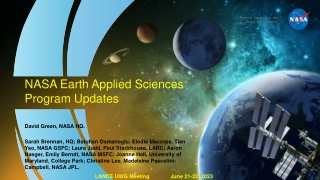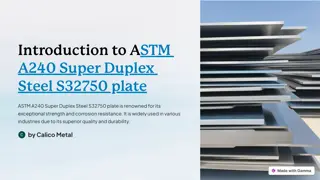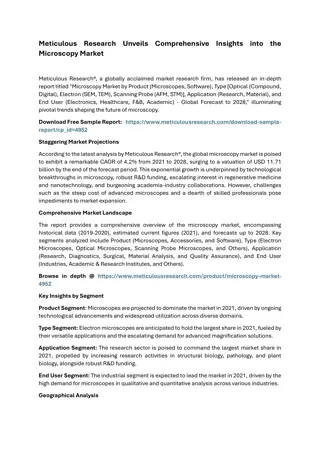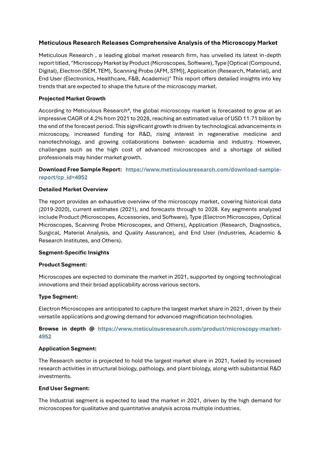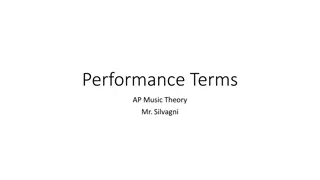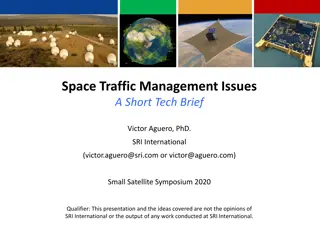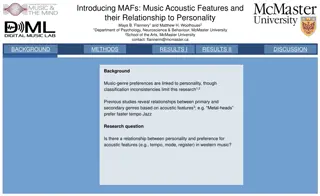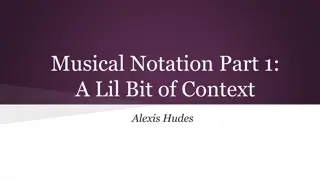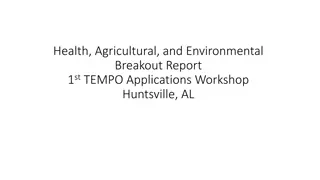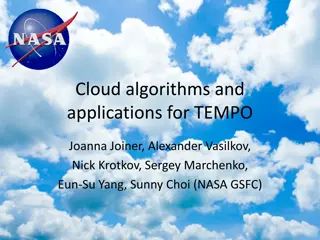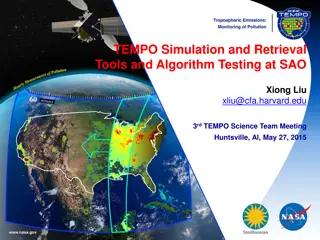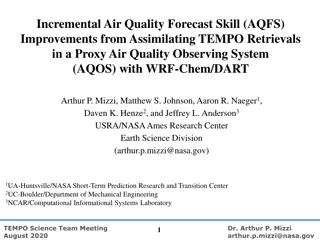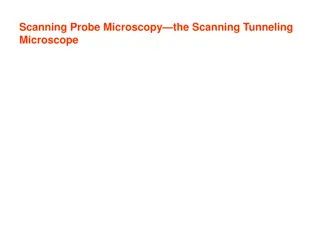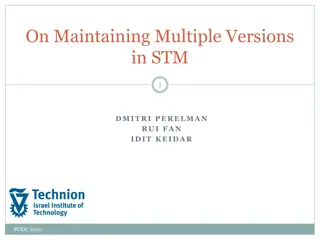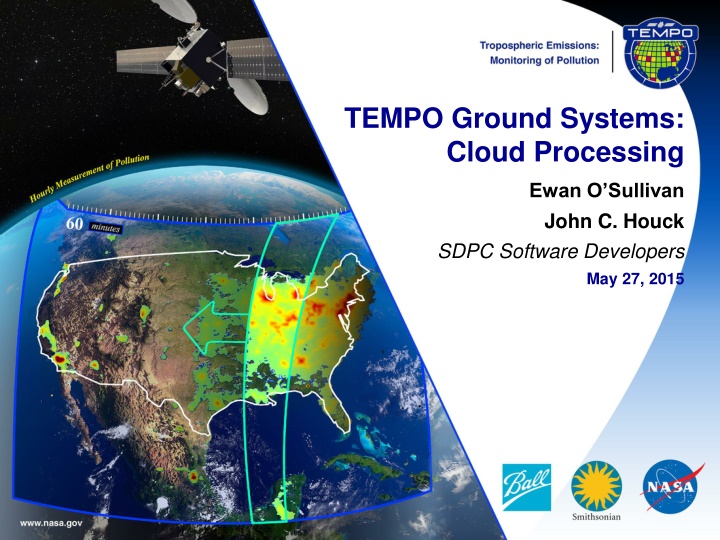
Cloud Processing Modifications for TEMPO Science Team Meeting
Explore the cloud processing modifications for TEMPO outlined during the Science Team Meeting, including changes common to all codes and cloud-specific adjustments. Learn about file format updates, error handling enhancements, and the transition to netCDF for improved efficiency.
Download Presentation

Please find below an Image/Link to download the presentation.
The content on the website is provided AS IS for your information and personal use only. It may not be sold, licensed, or shared on other websites without obtaining consent from the author. If you encounter any issues during the download, it is possible that the publisher has removed the file from their server.
You are allowed to download the files provided on this website for personal or commercial use, subject to the condition that they are used lawfully. All files are the property of their respective owners.
The content on the website is provided AS IS for your information and personal use only. It may not be sold, licensed, or shared on other websites without obtaining consent from the author.
E N D
Presentation Transcript
TEMPO Ground Systems: Cloud Processing Ewan O Sullivan John C. Houck SDPC Software Developers May 27, 2015
Cloud code development at SAO Starting point: OMI Raman-scattering cloud code (OMCLDRR) Modification for TEMPO Changes common to all science codes Cloud-specific changes Testing Resource usage Further work 5/27/15 2 TEMPO Science Team Meeting 2015: Cloud Processing
OMCLDRR Main products: Cloud Fraction Cloud Pressure (optical centroid pressure) Code characteristics: ~10000 lines of Fortran90, ~120 subroutines / functions Inputs: HDF-EOS2/HDF4 radiance and irradiance ASCII and fortran binary format calibration files (climatologies, cross-sections, lookup tables, etc.) Output: HDF-EOS5/HDF5 Fast code: ~70s to process one OMI orbit. 5/27/15 3 TEMPO Science Team Meeting 2015: Cloud Processing
Modifications for TEMPO: common to all codes File format changes: TEMPO will use netCDF4/HDF5 throughout Replace HDF-EOS with TEMPO I/O library built on netCDF4 (libtio) Error handling and logging: ECS SDP Toolkit over-complicated for our needs Replace with dedicated error handling and logging library (libtell) Compilers: OMCLDRR built using PGI compiler TEMPO software development uses GNU and Intel compilers 5/27/15 4 TEMPO Science Team Meeting 2015: Cloud Processing
Modifications for TEMPO: Cloud-specific Remove/disable unused experimental/test code Remove OMI-specific features Spatial zoom mode, small pixel data, row anomaly, etc. Reformat fortran binary calibration files to netCDF Smaller, human readable files with no significant loss of speed Results: ~1000 lines of code removed, netCDF I/O added but HDF-EOS I/O retained for testing, Speed of code retained. Refactoring for TEMPO mostly complete 5/27/15 5 TEMPO Science Team Meeting 2015: Cloud Processing
Testing Regression testing Nightly build compiles and runs GNU and Intel versions of code every weekday, using OMI data Output compared with baseline file blessed by GSFC developers Cross-comparison of HDF-EOS and netCDF inputs/outputs Tests specific capabilities: spline and linear interpolation, wavelength shift & squeeze, output of residuals Integration testing Reduced-size TEMPO-format granule processed through Cloud, NO2, HCHO codes, using pipeline manager prototype Throughput tests Tests with full-size TEMPO granule - no problems identified 5/27/15 6 TEMPO Science Team Meeting 2015: Cloud Processing
Resource Usage Time to process one OMI orbit: ~70s (Intel Xeon 2.8 GHz) Memory usage: ~112 MB Compare to other science codes: Total O3: ~70s Trace gas (HCHO, NO2): ~1 hour O3 profile (not yet updated for TEMPO): several hours TEMPO 6-minute granule size equivalent to ~2.5 OMI orbits Tests confirm equivalent scale-up in processing time. Conclusion: Cloud code will be a minor resource user, no problems expected even with increased capabilities 5/27/15 7 TEMPO Science Team Meeting 2015: Cloud Processing
Further work / TBD Incorporate improvements from GSFC developers: Uncertainty estimation Improved surface reflectance climatology Issues to be resolved: Test data Cloud mask product CDR-level review of Cloud, Trace gas, and Total O3 codes scheduled for October We expect to have a prototype pipeline including all three codes, updated for TEMPO, ready for the review Take-home message: Cloud code modifications for TEMPO on schedule, no problems expected 5/27/15 8 TEMPO Science Team Meeting 2015: Cloud Processing


